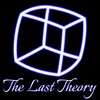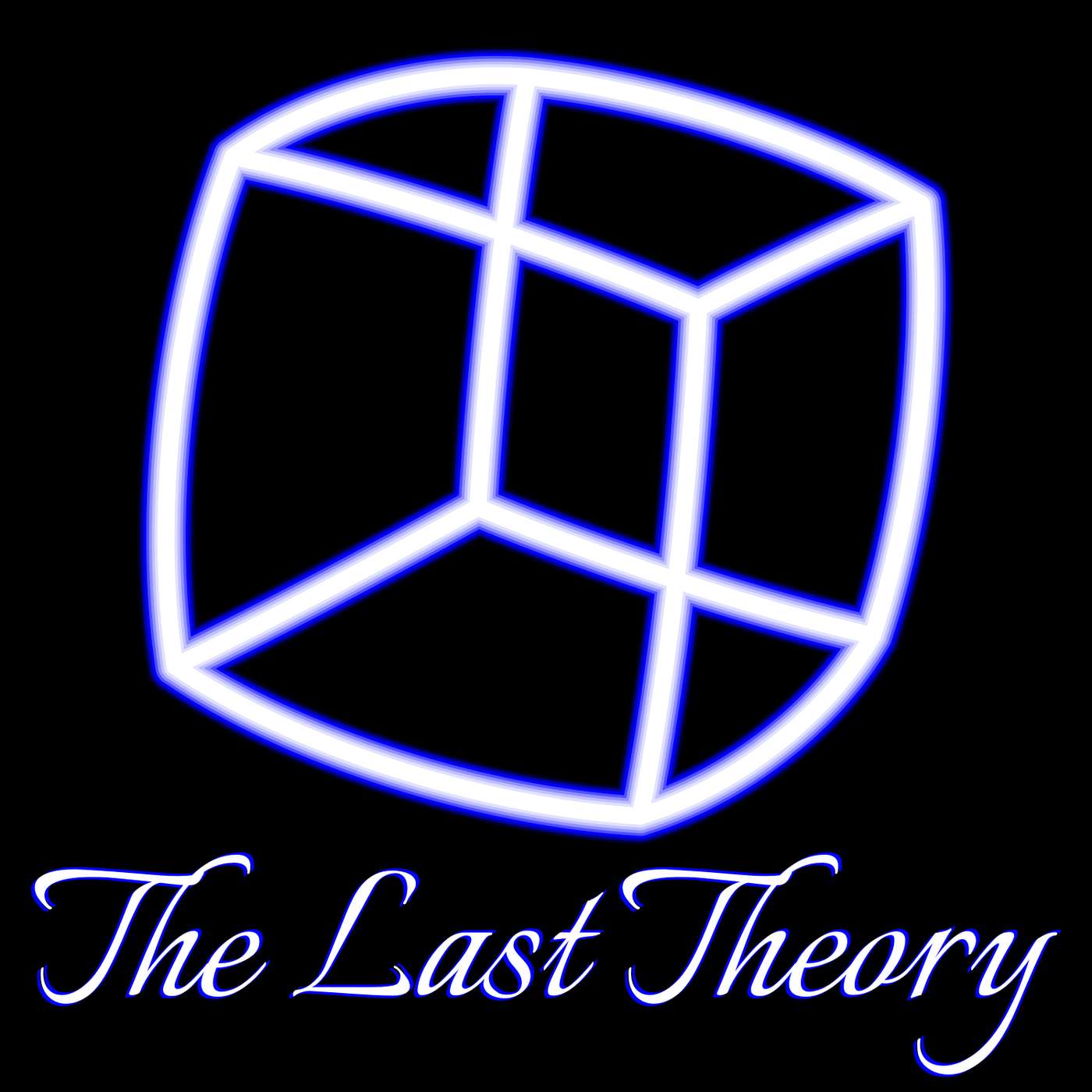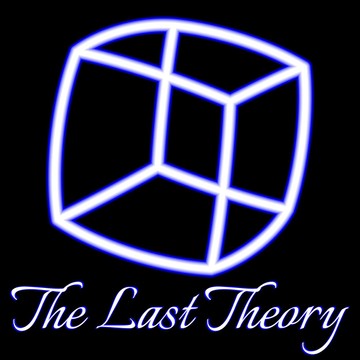

The Last Theory
Mark Jeffery
The Last Theory is an easy-to-follow exploration of what might be the last theory of physics. In 2020, Stephen Wolfram launched the Wolfram Physics Project to find the elusive fundamental theory that explains everything. On The Last Theory podcast, I investigate the implications of Wolfram's ideas and dig into the details of how his universe works. Join me for fresh insights into Wolfram Physics every other week.
Episodes
Mentioned books

Sep 21, 2023 • 14min
How to derive general relativity from Wolfram Physics with Jonathan Gorard
Here’s a masterclass from Jonathan Gorard.One of the most compelling results to come out of the Wolfram Physics is Jonathan’s derivation of the Einstein equations from the hypergraph.Whenever I hear anyone criticize the Wolfram model for bearing no relation to reality, I tell them this: Jonathan Gorard has proved that general relativity can be derived from the hypergraph.In this excerpt from our conversation, Jonathan describes how making just three reasonable assumptions – causal invariance, asymptotic dimension preservation and weak ergodicity – allowed him to derive the vacuum Einstein equations from the Wolfram model.In other words, the structure of space-time in the absence of matter more or less falls out of the hypergraph.And making one further assumption – that particles can be treated as localized topological obstructions – allowed Jonathan to derive the non-vacuum Einstein equations from the Wolfram model.In other words, the structure of space-time in the presence of matter, too, falls out of the hypergraph.It’s difficult to overstate the importance of this result.At the very least, we can say that the Wolfram model is consistent with general relativity.To state it more strongly: we no longer need to take general relativity as a given; instead, we can derive it from Wolfram Physics.—Jonathan’s seminal paper on how to derive general relativitySome Relativistic and Gravitational Properties of the Wolfram Model; also published in Complex SystemsJonathan GorardJonathan Gorard at The Wolfram Physics ProjectJonathan Gorard at Cardiff UniversityJonathan Gorard on TwitterThe Centre for Applied CompositionalityThe Wolfram Physics ProjectPeople mentioned by JonathanAlfred GrayResearch mentioned by JonathanThe volume of a small geodesic ball of a Riemannian manifold by Alfred GrayTubes by Alfred GrayConcepts mentioned by JonathanHausdorff dimensionGeodesic balls, tubes & conesRicci scalar curvatureRicci curvature tensorEinstein equationsEinstein–Hilbert actionRelativistic Lagrangian densityCausal graphTensor rankTraceFrom A Project to find the Fundamental Theory of Physics by Stephen Wolfram:DimensionCurvatureImagesSpinning and chargend black hole with accretion disk by Simon Tyran, Vienna (Симон Тыран) licensed under CC BY-SA 4.0Альфред Грэй в Греции by AlionaKo licensed under CC BY-SA 3.0—The Last Theory is hosted by Mark Jeffery, founder of the Open Web MindI release The Last Theory as a video too! Watch here.Kootenay Village Ventures Inc.

Sep 7, 2023 • 16min
How to derive quantum mechanics from Wolfram Physics with Jonathan Gorard
Here’s the first of two crucial excerpts from my conversation with Jonathan Gorard.The core idea of Wolfram Physics is that we can model the universe as a hypergraph. If we want this idea to be taken seriously, we’re going to have to derive physics from the hypergraph.The twin pillars of physics, as we know it, are quantum mechanics and general relativity.In this episode, Jonathan explains how quantum mechanics can be derived from the Wolfram model, indeed, how quantum mechanics unexpectedly fell out of the model.It’s a fascinating story.We start with the role of the observer. According to Jonathan, it turns out not to be necessary to narrow our focus to only causally invariant rules.Why not? Because macroscopic observers like ourselves impose causal invariance through our coarse-graining of the hypergraph. In other words, by squinting at the universe, seeing only its large-scale features and glossing over the finer details, we reduce multiple paths through the multiway graph to a single timeline, and, in the process, impose causal invariance.Jonathan goes on to explain that this coarse-graining can be modelled with completion rules. These are fake rules, similar to the true rules of Wolfram Physics, but posited solely to model the coarse-graining of the hypergraph by the observer.And here’s the thing. According to Jonathan, these completion rules are formally equivalent to the collapse of the wavefunction in quantum mechanics. In other words, we finally have an explanation for how the observer causes the collapse of the wavefunction, reducing Schrödinger’s half live, half dead cat to one that’s either dead or alive.If Jonathan’s right, then this is a true breakthrough, not just in quantum mechanics, but in the philosophy of physics.In the next episode, we’ll move on to the other pillar of physics: Jonathan will explain how to derive general relativity from the hypergraph.There’s much more to explain about each of these derivations, but we’re finally getting to the crux of Wolfram Physics, the question of whether it can, after all, model our universe.—Jonathan’s seminal paper on how to derive quantum mechanicsSome Quantum Mechanical Properties of the Wolfram ModelJonathan GorardJonathan Gorard at The Wolfram Physics ProjectJonathan Gorard at Cardiff UniversityJonathan Gorard on TwitterThe Centre for Applied CompositionalityThe Wolfram Physics ProjectConcepts mentioned by JonathanCausal invarianceComputational irreducibilityCelestial mechanicsMolecular dynamicsSpace-like separationHeisenberg’s uncertainty principleHeisenberg’s microscope experimentQuantum entanglementBell’s inequalitiesMultiway systemCoarse-grainingSchrödinger equationUnitary operatorHermitian operatorConjugate transpose operationTime reversalWavefunction collapseQuantum interferenceQuantum tunnellingStephen Wolfram’s booksA New Kind of ScienceA project to find the Fundamental Theory of Physics—The Last Theory is hosted by Mark Jeffery, founder of the Open Web MindI release The Last Theory as a video too! Watch hereKootenay Village Ventures Inc.

Aug 24, 2023 • 15min
Peer review is suffocating science
You know peer review, right?It’s the way academics check each other’s research papers.It ensures that only the good ones are published and prevents the bad ones from getting through.Right?Wrong.Peer review does precisely the opposite of what you think it does.It prevents the good papers from being published, and ensures that only the bad ones get through.Peer review is suffocating science.If we want to reverse the stagnation of science over the last 50 years, then we’ve got to get rid of peer review.—I highly recommend you read Adam Mastroianni’s splendid article The rise and fall of peer reviewI first heard Adam’s ideas about peer review in his conversation Adam Mastroianni on Peer Review and the Academic Kitchen with Russ Roberts on EconTalkWhy has there been no progress in physics since 1973?articleaudiovideoScientific papers:The journal Nature began to require peer review in 1973Millions of academic articles are published every yearSome scientists simply make stuff upFraudulent studies make it into respectable journals like Science, Nature and The LancetPhysicists:Isaac NewtonAlbert Einstein’s four papers published in 1905Max Planck’s principle that science progresses one funeral at a timeThe Wolfram Physics Project:Stephen WolframJonathan GorardMy projects:The Last TheoryOpen Web MindImage of Adam Mastroianni by permission from Adam Mastroianni—The Last Theory is hosted by Mark Jeffery, founder of the Open Web MindI release The Last Theory as a video too! Watch hereThe full article is hereKootenay Village Ventures Inc.

Aug 10, 2023 • 11min
Is the universe a tautology? with Jonathan Gorard
“Sorry, this is now getting very metaphysical,” says Jonathan Gorard part way through this excerpt from our conversation.We start by talking about applying more than one rule to the hypergraph to create rulial multiway systems.This takes us part way towards applying every possible rule, in other words, towards the ruliad.We move on to the idea of measuring the complexity of a structure in terms of the minimum amount of information needed to express it.Jonathan applies this idea to the ruliad, pointing out that it takes almost no information to express, since it encompasses all possible rules.Since he believes, however, that there is some content to the universe – that it is not a tautalogy – this leads Jonathan to reject the idea of the ruliad.We dig into why he has this intuition is that the universe is not a tautalogy.Jonathan invokes theologians like John Duns Scotus, who promulgated the idea the the world is neither completely reducible nor completely irreducible.He follows the scholastics in steering a middle path, suggesting that there’s enough content in the universe that it’s interesting, but not so much content that we can’t write down well-defined laws of nature.This brings us, for the first time, to the role of the observer in the Wolfram model.Again, Jonathan steers a middle path between placing the computational burden entirely on the universe and placing the computational burden entirely on the observer.I find this 9-minute exposition fascinating. It gets to the heart of some of the philosophical differences between Jonathan Gorard and Stephen Wolfram, and to the nature of the universe and our role as observers.—Jonathan GorardJonathan Gorard at The Wolfram Physics ProjectJonathan Gorard at Cardiff UniversityJonathan Gorard on TwitterThe Centre for Applied CompositionalityThe Wolfram Physics ProjectPeople mentioned by JonathanJohn Duns ScotusXerxes D. ArsiwallaHatem ElshatlawyResearch mentioned by JonathanHomotopies in Multiway (Non-Deterministic) Rewriting Systems as n-Fold Categories by Xerxes D. Arsiwalla, Jonathan Gorard, Hatem ElshatlawyPregeometric Spaces from Wolfram Model Rewriting Systems as Homotopy Types by Xerxes D. Arsiwalla, Jonathan GorardConcepts mentioned by JonathanRulial Multiway System∞-category∞-groupoid(∞,1)-toposGrothendieck’s homotopy hypothesisAlgorithmic complexity theoryAlgorithmic information theoryKolmogorov complexityEinstein field equationsCurvature invariantQualia—The Last Theory is hosted by Mark Jeffery, founder of the Open Web MindI release The Last Theory as a video too! Watch here.Kootenay Village Ventures Inc.

Jul 27, 2023 • 18min
What is a particle in Wolfram’s universe?
It’s pretty easy to see how three-dimensional space might arise from Wolfram Physics.The hypergraph kinda looks like space, and, for some rules, it kinda looks like it’s three-dimensional.But our universe isn’t just empty three-dimensional space.It’s mostly empty space, but there are also particles moving through that space: photons, neutrinos, electrons, quarks.Sometimes, these particles interact, annihilating each other and producing new particles.If Wolfram Physics is to be a successful model of our universe, it must, of course, model these elementary particles and their interactions.So where are the particles in the hypergraph?What is a particle in Wolfram’s universe?—Animations:Thanks to Alan Dewar for permission to use his excellent implementation of Conway’s Game of Life for many of the animations in the videoThanks also to Chris Rowett for permission to use his Life Viewer, a beautiful implementation of Conway’s Game of Life, which I used for the greyship animation in the video and image in the thumbnailAnother implementation of Conway’s Game of Life, which reproduces the Life Lexicon from ConwayLife.com, is at playgameoflife.comSources:Talking of ConwayLife.com, that’s another incredible resource for information on Conway’s Game of LifeTools:I created an RLE to text converter to convert Run Length Encoded patterns to plain text formatImages: John H Conway 2005 by Thane Plambeck licensed under CC BY 2.0Sounds:Crickets choir by Serg Childed licensed under CC BY-SA 4.0—The Last Theory is hosted by Mark Jeffery, founder of the Open Web MindI release The Last Theory as a video too! Watch here.The full article is here.Kootenay Village Ventures Inc.

Jul 13, 2023 • 7min
One rule to rule them all? with Jonathan Gorard
In the early days of the Wolfram Physics Project, Stephen Wolfram seemed to be seeking a single rule that, when applied to the hypergraph, could generate our universe.More recently, however, Wolfram has promoted the idea of the ruliad, the application of every possible rule to the hypergraph.So I asked Jonathan Gorard, who was instrumental in the founding of the Wolfram Physics Project, whether all rules might be applied to generate our universe, or whether he was searching for one rule to rule them all.—Stephen Wolfram’s 2010 TED talk in which he said he was committed “to see if within this decade we can finally hold in our hands the rule for our universe”.Jonathan GorardJonathan Gorard at The Wolfram Physics ProjectJonathan Gorard at Cardiff UniversityJonathan Gorard on TwitterThe Centre for Applied CompositionalityThe Wolfram Physics ProjectConcepts mentioned by JonathanEquivalence classCongruence classLagrangian mechanicsHamiltonian mechanicsTeleologyOntologyAxiomatic view of mathematics – top-downConstructivist view of mathematics – bottom-upDomain of discourseIntuitionismAlgorithmic information theory—The Last Theory is hosted by Mark Jeffery, founder of the Open Web MindI release The Last Theory as a video too! Watch here.Kootenay Village Ventures Inc.

Jun 30, 2023 • 16min
John von Neumann and the art of being there
John von Neumann might be the most important figure in Wolfram Physics prehistory.Whenever any of the most important prerequisites to Wolfram Physics were happening – quantum mechanics, Gödel’s theorem, Turing machines, electronic computers, cellular automata – John von Neumann always seemed to be there.How did John von Neumann always come to be in the right place at the right time to contribute to some of the most significant developments in physics, mathematics and computation history?For this, another high-budget, big-hair episode of The Last Theory, I flew all the way to Budapest, where John von Neumann was born, to point to a plaque and get some answers.—I took inspiration and information for this episode from Ananyo Bhattacharya’s biography of John von Neumann: The Man from the FutureBuy it in the USBuy it in the UKBuy it in CanadaBuy it in AustraliaPeopleJohn von NeumannAlbert EinsteinErwin SchrödingerWerner HeisenbergKurt GödelAlan TuringSeth NeddermeyerJ. Presper EckertJohn MauchlyStephen WolframJonathan GorardMax PiskunovStanisław UlamFather StricklandConceptsHilbert spaceGödel’s incompleteness theoremsUniversal Turing machineTuring’s proofVon Neumann architectureThe Manhattan ProjectCellular automataComputersIAS machineENIACEDVACIBM 701ImagesImage of John von Neumann from the Los Alamos National Laboratory, which rather pointlessly requires that this rather ponderous statement be reproduced here: “Unless otherwise indicated, this information has been authored by an employee or employees of the Los Alamos National Security, LLC (LANS), operator of the Los Alamos National Laboratory under Contract No. DE-AC52-06NA25396 with the U.S. Department of Energy. The U.S. Government has rights to use, reproduce, and distribute this information. The public may copy and use this information without charge, provided that this Notice and any statement of authorship are reproduced on all copies. Neither the Government nor LANS makes any warranty, express or implied, or assumes any liability or responsibility for the use of this information.”Turing Machine Model Davey 2012 by Rocky Acosta licensed under CC BY 3.0Animation. 1200 iterations of the ‘Rule 110’ Automata by Mr. Heretic licenced under CC BY-SA 3.0Bundesarchiv Bild183-R57262, Werner Heisenberg by an unknown author (Bundesarchiv, Bild 183-R57262) licensed under CC BY-SA 3.0 DETuring in 1935 by Tomipelegrin licensed under CC BY-SA 4.0Gospers glider gun by Lucas Vieira licensed under CC BY-SA 3.0—The Last Theory is hosted by Mark Jeffery, founder of the Open Web MindI release The Last Theory as a video too! Watch here.The full article is here.Kootenay Village Ventures Inc.

Jun 15, 2023 • 8min
How to find interesting and plausible rules with Jonathan Gorard
The Wolfram model allows an infinite number of rules.Some of these rules generate interesting universes that are complex and connected, some of these rules generate plausible universes that look a little like our own, and others... go nowhere.In this excerpt from my conversation with Jonathan Gorard, I ask him how to find rules of Wolfram Physics that are both interesting and plausible.—Jonathan GorardJonathan Gorard at The Wolfram Physics ProjectJonathan Gorard at Cardiff UniversityJonathan Gorard on TwitterThe Centre for Applied CompositionalityThe Wolfram Physics ProjectThe paper referred to by JonathanAlgorithmic Causal Sets and the Wolfram Model by Jonathan GorardConcepts mentioned by JonathanCausal invarianceManifoldCausal graphSpace-like separationCausal coneDimensionalityCurvatureDiscrete differential operatorsDiscrete Laplacian—I release The Last Theory as a video too! Watch here.Kootenay Village Ventures Inc.

Jun 1, 2023 • 12min
Why has there been no progress in physics since 1973?
The twentieth century was a truly exciting time in physics.From 1905 to 1973, we made extraordinary progress probing the mysteries of the universe: special relativity, general relativity, quantum mechanics, the structure of the atom, the structure of the nucleus, enumerating the elementary particles.Then, in 1973, this extraordinary progress... stopped.I mean, where are the fundamental discoveries in the last 50 years equal to general relativity or quantum mechanics?Why has there been no progress in physics since 1973?For this high-budget, big-hair episode of The Last Theory, I flew all the way to Oxford to tell you why progress stopped, and why it’s set to start again: why progress in physics might be about to accelerate in the early twenty-first century in a way we haven’t seen since those heady days of the early twentieth century.—Eric Weinstein’s claims that there has been no progress in physics since 1973:BigThinkThe Joe Rogan ExperienceLord Kelvin— I release The Last Theory as a video too! Watch here.The full article is here.Kootenay Village Ventures Inc.

May 18, 2023 • 5min
How to find causally invariant rules with Jonathan Gorard
Causal invariance is a crucial characteristic for any rule of Wolfram Physics.According to Wolfram MathWorld, if a rule is causally invariant, then “no matter which evolution is chosen for a system, the history is the same, in the sense that the same events occur and they have the same causal relationships.”Causal invariance is one of the assumptions Jonathan Gorard needs to make to derive the equations of General Relativity from the hypergraph. That’s how crucial it is! Given that not every rule of Wolfram Physics is causally invariant, I asked Jonathan how we find the ones that are.Here, in another excerpt from our recent conversation, is his answer: how to find causally invariant rules.—Jonathan GorardJonathan Gorard at The Wolfram Physics ProjectJonathan Gorard at Cardiff UniversityJonathan Gorard on TwitterThe Centre for Applied CompositionalityThe Wolfram Physics ProjectPeople and concepts mentioned by JonathanStephen WolframMax PiskunovCausal invarianceWolfram Function RepositoryWolfram EngineWolfram MathematicaWolfram Programming LabCausalInvariantQTotalCausalInvariantQAssociativeCommutativeAutomated theorem provingUndecidable problem—I release The Last Theory as a video too! Watch here.Kootenay Village Ventures Inc.


